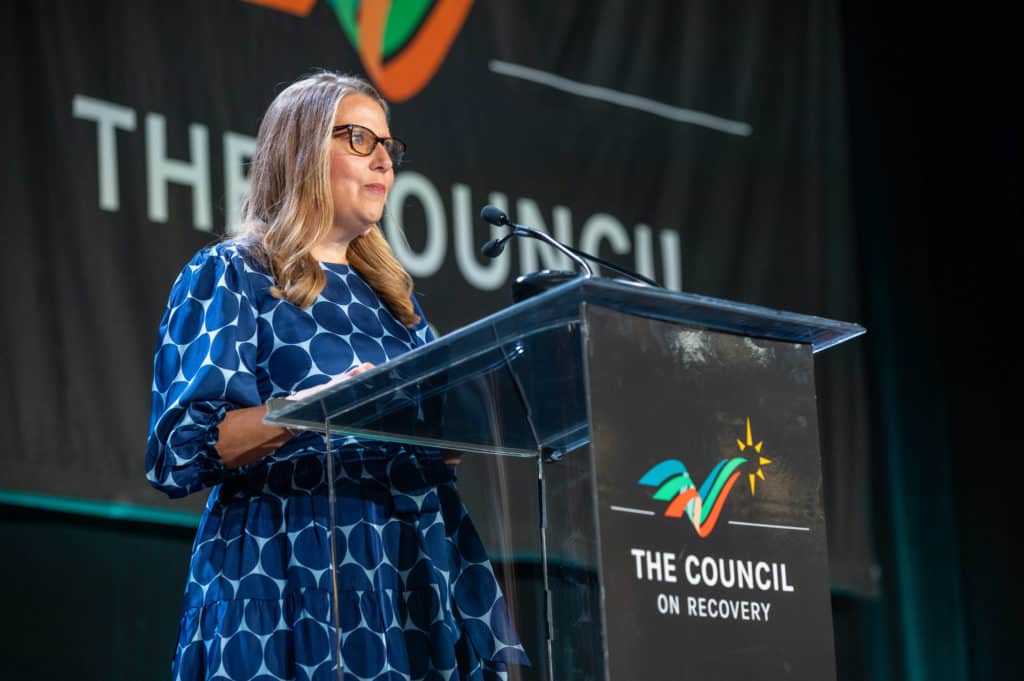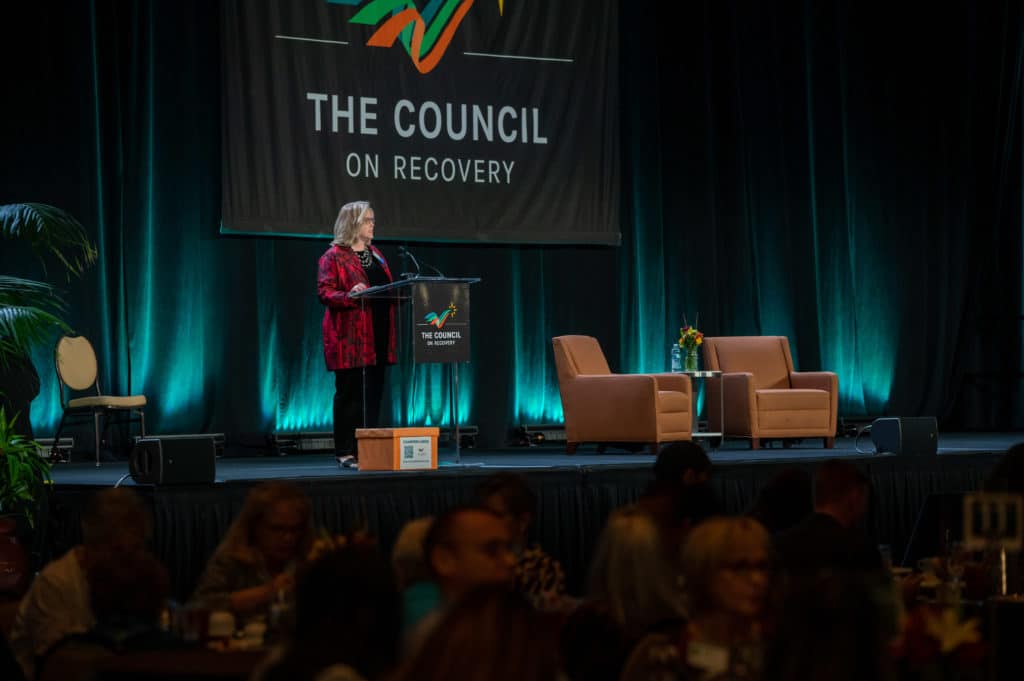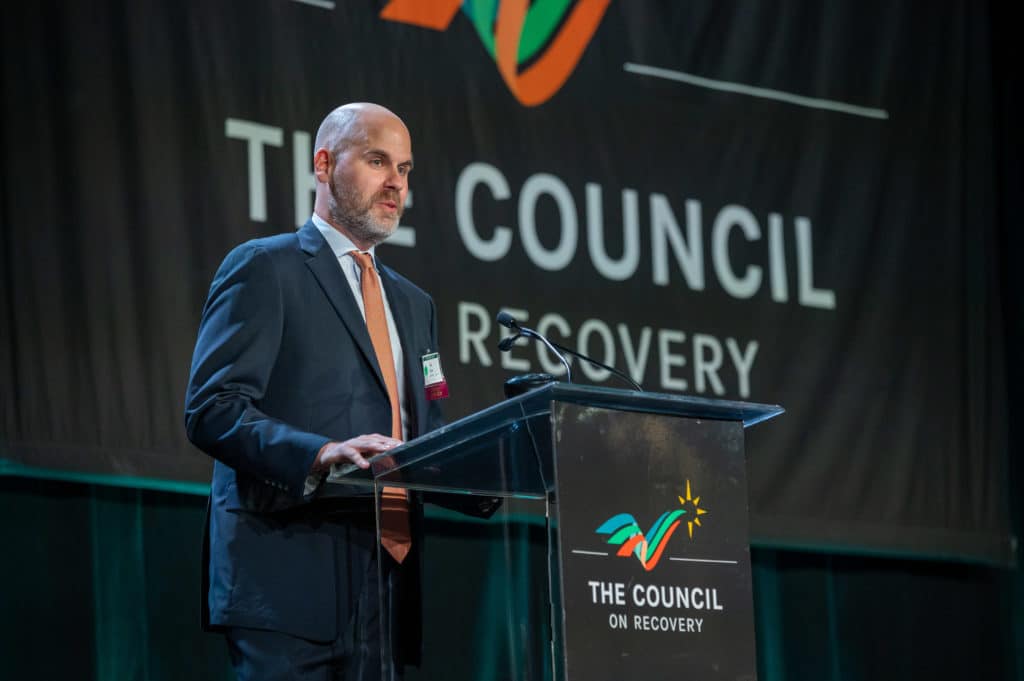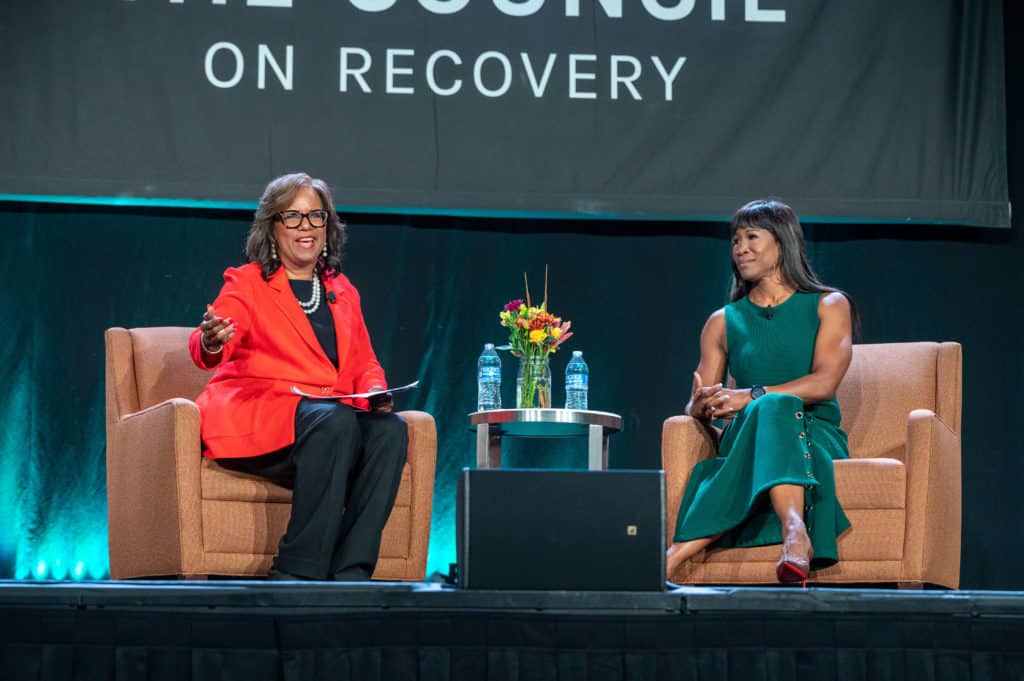Houston Ballet star Lauren Anderson inspired a crowd of more than 800 Houstonians with her reflections on recovery, parenting and the arts at The Council’s Fall Luncheon on Friday, October 21. Presented by The Moody Endowment and co-chaired by Chris Flood and Jenifer & Joseph Matula, the event raised $425,000 to help local individuals and families recover from the effects of addiction and co-occurring mental health disorders.

Mistress of Ceremonies Melanie Lawson of ABC-13 opened the program by welcoming the crowd of event sponsors, donors, community partners, and people in recovery. Associate Pastor Andrew Johnson of Neartown Church provided the invocation.
The Council’s Board of Trustees Chair Amanda Polich and President and CEO Mary Beck, LMSW, CAI then spoke on the impact of The Council and its speaker series on the communities we serve.


Said Beck, “Your presence and support send a message that the work of The Council matters – a message that substance use disorders are preventable and treatable and that recovery is not only possible, but that in recovery there is hope for renewal, and an amazingly fulfilling life.”
The event’s co-chairs, Chris Flood and Joseph Matula, then gave impassioned testimonies about their experiences with addiction and how The Council was crucial to their recovery journeys.
“I have found a new peace, a new freedom and a new happiness,” said Flood. “None of this would have been possible without the services of The Council on Recovery.”


The program continued with an emotional video featuring Council clients and their stories, as well as Lauren Anderson’s involvement with the Cradles Project, which serves new and expecting parents who are at risk of substance use disorders. Anderson and her longtime friend Lawson then took the stage for an entertaining and inspirational conversation about addiction, recovery, parenting, and the arts.
Celebrating 13 years of sobriety this year, Anderson said, “This disease can happen to anyone. Even a little black girl from the Third Ward in Houston who became the Sugar Plum Fairy. The good thing is that there is help at The Council.”
The luncheon also celebrated other artists in recovery by featuring an exclusive gallery in the foyer of the ballroom. Curated by Linda Moffitt of the Jack Meier Gallery, this gallery dazzled attendees with its eclectic collection of paintings, costumes, sculptures, photographs and interdisciplinary works.


For more information about the history of The Council’s speaker series and upcoming events, visit www.councilspeakerseries.org.
